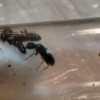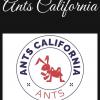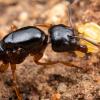Well I need to redo alot of writing lol. Honestly I never realized how small this species was. I have seen so many Solenopsis molesta in my yard living in lasius nests. Now that I look at them I can see the size difference. I don't know if I will get rid of this species now. I don't believe I have ever raised a polydomous species. At least a colony that is acting this way. I have a 2 queen colony starting that stay at opposite ends of the test tube. Although they will move the eggs together if certain places get to warm or cold. This post wasn't supposed to be posted yet either. I was starting a template for the post on my ride to work. I would have had my state and price other wise. But now I want to start this colony in a plant surrounding by water like ants Canada's island colony. I have started reading about this species and want to learn what I can before hibernation is over. If anyone has an tips please let me know. This is a new species for me and my luck hasn't been great for small species.

















